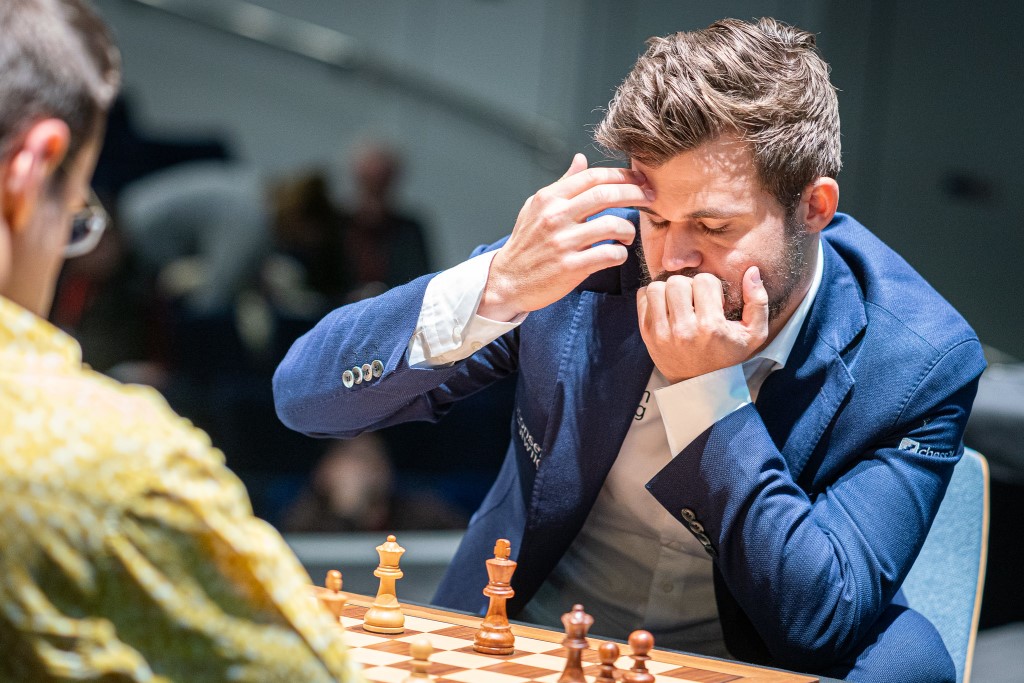14-move draws
World champion Magnus Carlsen was visibly relieved after winning the second set of his final matchup against Hikaru Nakamura. The Norwegian came from losing the first set and starting the second day of action with another painful defeat. He managed to even the score of the mini-match with a win in game 3 and saw his opponent “giving up” his privilege of playing with the white pieces by twice allowing quick draws by repetition. Carlsen said of Nakamura’s approach:
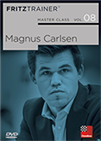 Scarcely any world champion has managed to captivate chess lovers to the extent Carlsen has. The enormously talented Norwegian hasn't been systematically trained within the structures of a major chess-playing nation such as Russia, the Ukraine or China.
Scarcely any world champion has managed to captivate chess lovers to the extent Carlsen has. The enormously talented Norwegian hasn't been systematically trained within the structures of a major chess-playing nation such as Russia, the Ukraine or China.
It’s not an obvious choice, but I don’t think it’s a poor choice. I think in general he has a match strategy, and he knows what he’s doing.
Carlsen himself has used that strategy in his latest World Championship matches, when he knew he was the favourite in the rapid playoffs against Sergey Karjakin and Fabiano Caruana. Unlike for Carlsen, however, the approach did not work out for Nakamura this time around. The world champion explained:
People make the decisions that they think give them the best chance to win, and then you live with the consequences. You cannot base everything on the results. So I think obviously it’s still going to sting, but I think he felt that that was the right decision, and he probably still does.
This statement and the general demeanour of Carlsen during the post-mortem interview show how much he respects his opponent. And rightfully so, as Nakamura could have easily taken a 2:0 lead had he made the most of his chances on Saturday.
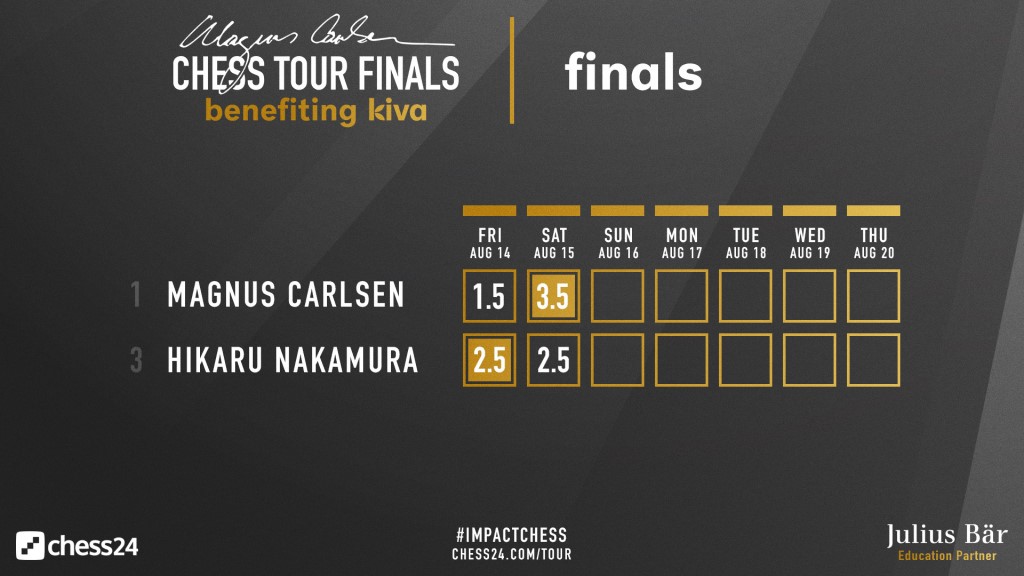
Click to enlarge
Carlsen 3½ : 2½ Nakamura
Game 1 was a thriller, with Carlsen failing to find the most critical continuation out of the opening (17.Rg3 instead of 17.Qd2) and then spending around ten minutes calculating the sharp continuations that followed. He played a very creative — yet imprecise — 20th move, and saw his opponent rising up to the challenge of defending against White’s attack:
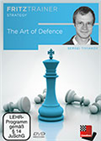 The purpose of this DVD is to explain the viewer all main methods of defence: exchanging pieces, creating a fortress, eliminating dangerous enemy pieces, escaping the danger zone with the king, improving the position of the pieces.
The purpose of this DVD is to explain the viewer all main methods of defence: exchanging pieces, creating a fortress, eliminating dangerous enemy pieces, escaping the danger zone with the king, improving the position of the pieces.
White went all in for the attack — 20...Qxa3 21.Qxa5 Bd5 22.Rxg7 c5 23.Bh5
Nakamura correctly assessed that he could capture the knight with 23...cxd4 and went on to defend against Carlsen’s desperate attack, spending almost 20 moves finding shelter for his king while up material. The world champion gave up trying on move 45.
Games 2 and 4 lasted 14 moves, with Nakamura staying true to his pragmatic approach, allowing everything to be decided first in Carlsen’s games with white and then in the blitz tiebreakers.
The American perhaps was thinking about the overall result of the set when he faltered by opting for a passive move in game 3:
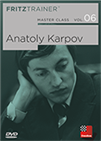 On this DVD a team of experts looks closely at the secrets of Karpov's games. In more than 7 hours of video, the authors examine four essential aspects of Karpov's superb play.
On this DVD a team of experts looks closely at the secrets of Karpov's games. In more than 7 hours of video, the authors examine four essential aspects of Karpov's superb play.
Black is a pawn up and has everything mostly under control, but White does have a strong initiative as compensation. 20...Nxd4 was called for here to keep the dynamic balance, while Nakamura’s 20...Bf7 allowed 21.Nxc6 Qxc6 22.Qg4+, when White gets the g-pawn and a better position with the bishop pair. Carlsen showed good technique to convert his advantage into a 59-move win.
The first 5-minute game of the tiebreaks was a well-played draw, while a blunder by Nakamura in the second blitz encounter put an end to the mini-match:
29.Qe4 loses immediately to 29...Qa4, attacking the rook and threatening mate on d1.
Links
